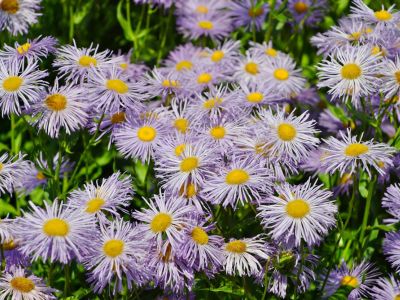Can You Grow Fleabane in Gardens?
Daisy fleabane (Erigeron speciosus) is an easy-care perennial wildflower with many hybrid offspring to fit almost any informal garden. Common specimens range in height from about 10 inches to 2 ½ feet (25.5 cm to 0.5 m.), and spread up to two feet (0.5 cm.) across in USDA plant hardiness zones 2 through 8, though in zones 7 and 8, daisy fleabane may struggle in the heat of the summer. Fleabane daisy growing in full sun sites with moist but well-drained soils perform well for a range of applications, with the taller hybrids commonly used as specimen plants or in groupings; shorter hybrids are ideal for adding color to rock gardens. There is some risk of fleabane wildflowers growing leggy in rich soils.
Care of Fleabane
Like with other wildflowers, daisy fleabane info is scarce, especially when it comes to care. This is largely because these ditch-dwelling natives thrive on neglect and prefer to be ignored. Fleabane hybrids respond well to grooming and deadheading if you’re looking for continuous blooming through the growing season. In rich soils, daisy fleabane may require staking, especially hybrids that exceed 2 feet (0.5 m.) in height. After two or three years, your daisy fleabane will need to be divided. The best time to do this is either spring or fall. Discard as much woody growth as possible, favoring the soft rosettes in spring, or cut the plant down to the ground in the fall before dividing. Most daisy fleabane hybrids play nice in the garden and remain fairly compact, but their seeds may start an army of volunteers, so be ready to pull them when they appear.
